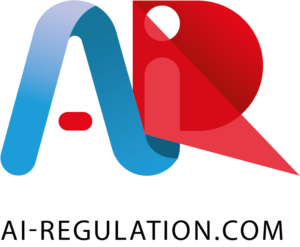On February 28, 2020, the The Joint Research Centre (JRC) of the European Commission has published its “AI WATCH: Defining Artificial Intelligence” report, including an AI taxonomy.
The JRC is, as the European Commission’s science and knowledge service, a centre supporting EU policies with independent scientific evidence. This report is published in the context of AI Watch, the European Commission knowledge service to monitor the development, uptake and impact of Artificial Intelligence (AI) for Europe, launched in December 2018.
If this report proposes an operational definition of artificial intelligence to be adopted in the context of AI Watch, AI Watch also aims to analyse policy initiatives in the Member States, uptake and technical developments of AI and its impact.
The operational AI definition found in this report is constituted by a concise taxonomy and a list of keywords that characterise the core domains of the AI research field, and transversal topics such as applications of the former or ethical and philosophical considerations, in line with the wider monitoring objective of AI Watch.
The definition of AI found is:
‘‘Artificial intelligence (AI) systems are software (and possibly also hardware) systems designed by humans that, given a complex goal, act in the physical or digital dimension by perceiving their environment through data acquisition, interpreting the collected structured or unstructured data, reasoning on the knowledge, or processing the information, derived from this data and deciding the best action(s) to take to achieve the given goal. AI systems can either use symbolic rules or learn a numeric model, and they can also adapt their behaviour by analysing how the environment is affected by their previous actions’’.
AI WATCH. Defining Artificial Intelligence : High-Level Expert Group on Artificial Intelligence (HLEG) definition of AI
This definition, which will be used as a basis for the AI Watch monitoring activity, is established by means of a flexible scientific methodology that allows regular revision. However, the report also mentions that others suitable definitions, less specialised, can be adopted, especially targeted to alternative uses.
Globally this definition is considered as a ‘starting point for the development of the operational definition’ of AI:
‘’We consider the definition proposed by the HLEG on AI as the starting point for the development of the operational definition. Although it may be considered highly technical for different audiences and objectives, it is a very comprehensive definition which incorporates the aspects of perception, understanding, interpretation, interaction, decision making, adaptation to behaviour and achievement of goals, whereas other definitions do not address them in their entirety’’.
As AI is a dynamic field, JRC used an ‘iterative method’ that can be updated over time to capture the rapid AI evolution. This work has been organised in a three step strategy as follows:
- Review of existing definitions: a review of AI definitions found in a selected set of 55 documents: 29 AI policy and institutional reports, 23 relevant research publications and 3 market reports, in order to incorporate academic, industrial and corporate perspectives.
- Definition selection, taxonomy formation and representative keywords selection: the adoption of, based on this review, a general definition of AI complemented with a taxonomy and keywords that characterise the AI domain. The keywords are extracted based on automatic text analysis of a corpus of AI scientific references, firm-level databases, and industrial activity documents, complemented by desk research and domain experts’ involvement.
- Definition and taxonomy validation: the approach was validated with a small number of AI experts.
As AI currently refers to everything and nothing at the same time, depending on the context, the JRC’s report over 80 pages focuses on a more operational, mixed and complex approach of AI found by complementary perspectives: policy, research and industry. A valuable contribution in the field of AI Regulation and AI Governance.
MEB.
Credit Photo: © European Union 2015 – European Parliament via Flickr.

